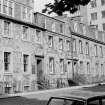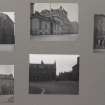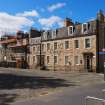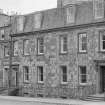Pricing Change
New pricing for orders of material from this site will come into place shortly. Charges for supply of digital images, digitisation on demand, prints and licensing will be altered.
Upcoming Maintenance
Please be advised that this website will undergo scheduled maintenance on the following dates:
Thursday, 9 January: 11:00 AM - 3:00 PM
Thursday, 23 January: 11:00 AM - 3:00 PM
Thursday, 30 January: 11:00 AM - 3:00 PM
During these times, some functionality such as image purchasing may be temporarily unavailable. We apologise for any inconvenience this may cause.
Edinburgh, 16-17 George Square
Faculty Building (20th Century), Terraced House(S) (18th Century)
Site Name Edinburgh, 16-17 George Square
Classification Faculty Building (20th Century), Terraced House(S) (18th Century)
Alternative Name(s) University Of Edinburgh
Canmore ID 117068
Site Number NT27SE 1303
NGR NT 25725 72957
Datum OSGB36 - NGR
Permalink http://canmore.org.uk/site/117068
- Council Edinburgh, City Of
- Parish Edinburgh (Edinburgh, City Of)
- Former Region Lothian
- Former District City Of Edinburgh
- Former County Midlothian
Publication Account (1951)
144. George Square.
This is the earliest, as well as the largest of the Georgian squares of Edinburgh, having been begun about 1766 and completed about 1785. Built on the grounds of Lady Ross's house, which fell gently towards the Meadows on the S., it measures about 516 ft. from N.N.W. to S.S.E. by 663 ft. from E.N.E. to W.S.W. There is an access at each corner, and originally each side was divided by a lane or street of which there survive only Windmill Street on the E. and the nameless lane on the S. leading into Buccleuch Place and North Meadow Walk. The square provided sixty building-stances in all, roughly fifteen on each side. These lots average 30 ft. in frontage and are sufficiently deep to leave room for back gardens with accesses both from the houses and from a lane. In the central area there is a common garden four and a half acres in extent.
Most of the houses are self-contained, terrace-houses comprising a sunk floor, three upper floors and an attic, the latest buildings-those situated at the E. end of the S. side-having in addition a cellarage and, in one case, a double attic, making seven storeys in all. In seven cases, however, the building consists of a main-door house with a flat or flats above it. The earlier houses, namely those remaining on the N. side and on the W. side up to Number 27, with Number 60 at the N. end of the E. side, are built of Craigmillar stone in all its various hues, relieved by dark-coloured "sneckings" in the characteristic manner of Michael Naysmith. From Number 28 to Number 59 the fronts are of Craigleith ashlar, sometimes polished but more commonly droved. In all cases the backs are of rubble.
There is considerable diversity in the several house-fronts, always subordinated, however, to the architectural unity of the Square as a whole. The entrances invariably have handsome doorways, in one or other of the versions of the Classic orders favoured at the time, and Numbers 25 and 29 have good fanlights above the doors. Some houses show a neat moulded cornice and rusticated quoins. Considerable use is made of stone belts to counteract the vertical lines of the Georgian windows. As regards the fenestration, the windows of Number 60 represent the most interesting arrangement. Number 15 has an early and interesting bay-window looking out on its garden.
Internally the houses are well planned and contain spacious and dignified rooms. Most of them retain their Georgian mantelpieces. Number 52 has wall-paintings by Paul Delacour which the owners have papered over. One or two houses have enriched plaster friezes which are probably original although the enriched plaster ceiling in the dining-room of Number 25 may be modern. The woodwork of doors, shutters, dado panelling, etc., is all of the highest quality.
RCAHMS 1951, visited c.1941
Photographic Survey (July 1963)
Photographic survey of buildings in the south of Edinburgh in 'George Square Ward' in 1963 by the Scottish National Buildings Record.














